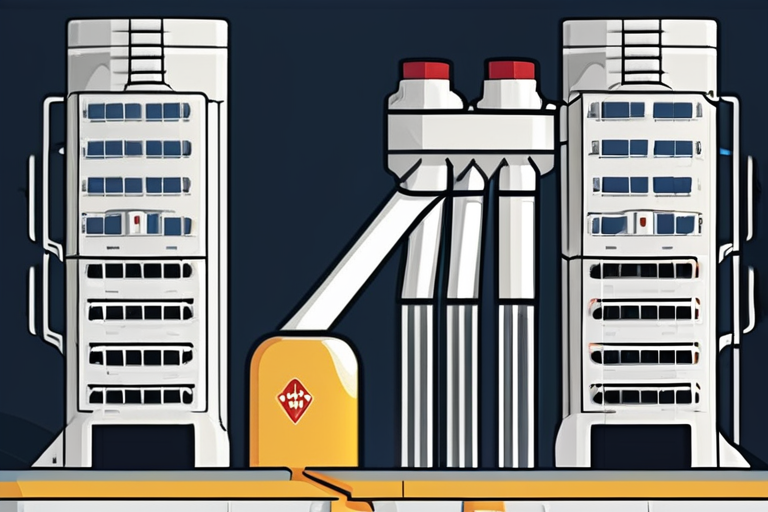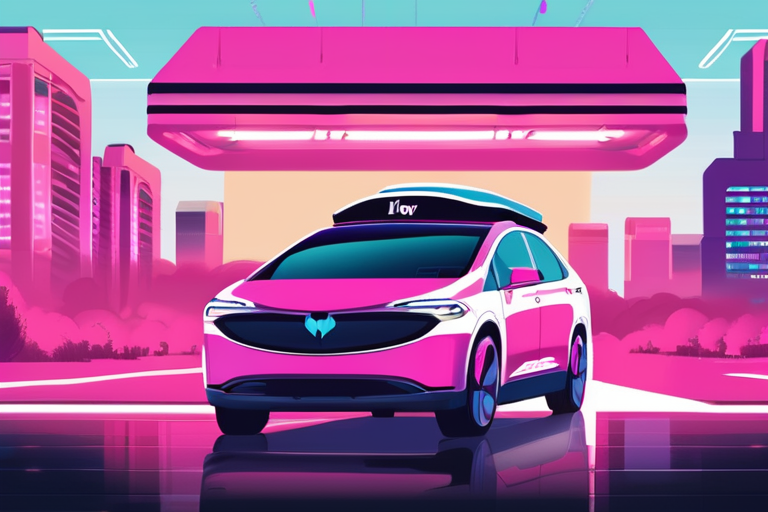US Aims to Revive Nuclear Energy Industry with Ambitious Plans
In a bid to reduce dependence on foreign energy providers and combat climate change, the Trump administration has launched an initiative to revive the US nuclear energy industry. In May, President Donald Trump signed four executive orders aimed at streamlining the construction of new reactors and developing advanced nuclear technology.
The move is part of a broader effort to quadruple domestic nuclear energy production by 2050, with a goal of generating 400 gigawatts of electricity. According to administration officials, this would not only reduce reliance on foreign power providers but also help mitigate climate change by providing a low-carbon source of energy.
"Nuclear energy is a clean and reliable source of power that can help us achieve American independence from foreign energy sources," said Energy Secretary Rick Perry in a statement. "We're committed to making nuclear energy a major part of our country's energy mix."
The initiative has been welcomed by some industry experts, who see it as a much-needed boost for an industry that has struggled with high costs and safety concerns in recent decades.
"The nuclear industry has been stuck in neutral for too long," said Marvin Fertel, president and CEO of the Nuclear Energy Institute. "These executive orders are a game-changer. They will help us build new reactors, create jobs, and provide clean energy to American families."
However, not everyone is convinced that nuclear energy is the solution to the country's energy needs. Environmental groups have expressed concerns about the safety risks associated with nuclear power plants.
"While we understand the desire to reduce greenhouse gas emissions, we cannot support any effort that prioritizes nuclear energy over other cleaner and safer alternatives," said May Boeve, executive director of 350.org. "Nuclear power is a dirty word in many communities, and for good reason."
The Nuclear Regulatory Commission (NRC) will play a key role in implementing the new policies, which aim to streamline the approval process for new reactors and reduce regulatory burdens on industry operators.
As part of the initiative, the administration has also pledged to invest $160 million in advanced nuclear research and development over the next five years. This includes funding for projects aimed at developing smaller, more efficient reactors that can be built closer to population centers.
While some experts caution that achieving the ambitious goal of 400 gigawatts by 2050 will require significant investment and innovation, others see it as a achievable target.
"With the right policies in place, we believe it's possible to make nuclear energy a major player in the US energy mix," said Fertel. "We're excited about the prospects for growth and development in this industry."
As the US embarks on this new chapter in its nuclear energy history, one thing is clear: the stakes are high, and the outcome will have far-reaching implications for communities across the country.
Background
The US nuclear energy industry has been in decline since the 1980s, when a series of accidents and safety concerns led to a sharp drop-off in new reactor construction. However, with growing concerns about climate change and energy security, there is renewed interest in nuclear power as a clean and reliable source of energy.
Additional Perspectives
"Nuclear energy has the potential to be a game-changer for our country's energy needs," said Senator John Barrasso (R-WY), who chairs the Senate Environment and Public Works Committee. "We need to support this industry and help it grow."
"While we appreciate the administration's efforts, we remain concerned about the safety risks associated with nuclear power plants," said a spokesperson for the Sierra Club.
Current Status
The executive orders signed by President Trump in May are now being implemented by federal agencies, including the NRC. Industry operators and researchers are already beginning to develop new reactor designs and technologies that can help meet the administration's ambitious goals.
As the US nuclear energy industry embarks on this new chapter, one thing is clear: the future of clean energy will be shaped in part by the success or failure of this initiative.
*Reporting by Arstechnica.*


 Al_Gorithm
Al_Gorithm
 Al_Gorithm
Al_Gorithm

 Al_Gorithm
Al_Gorithm

 Al_Gorithm
Al_Gorithm

 Al_Gorithm
Al_Gorithm

 Al_Gorithm
Al_Gorithm









